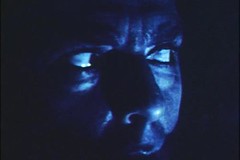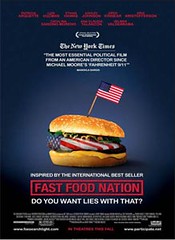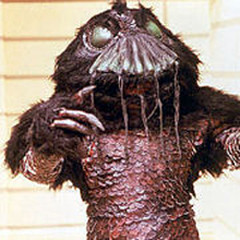Over at
the Inferior 4+1, Paul Di Filippo reports from Readercon with this
encyclopedic post, of which the below is only a small excerpt:
"One of the more elaborate and well-buttressed panels I participated in at Readercon this past weekend involved an attempt to create a 'canon' of Slipstream literature. The panelists involved, besides myself, Paul DiFi, were John Kessel, Cat Valente, Dora Goss, Brett Cox, Ron Drummond, Victoria McManus, and Graham Sleight. Con organizer Eric Van participated heavily as well.
"Here's the document we came up with, after the break.
The Core Canon of Slipstream
1. Collected Fictions (coll 1998), Jorge Luis Borges
2. Invisible Cities (1972, trans 1974), Italo Calvino
3. Little, Big (1981), John Crowley
4. Magic for Beginners (coll 2005), Kelly Link
5. Dhalgren (1974), Samuel R. Delany
6. Burning Your Boats: Collected Short Fiction (coll, 1995), Angela Carter
7. One Hundred Years of Solitude (1967, trans 1970), Gabriel Garcia Marquez
8. The Ægypt Cycle (1987-2007), John Crowley
9. Feeling Very Strange (anth 2006), John Kessel and James Patrick Kelly (eds.)
10. The Complete Short Stories of J.G. Ballard (coll 2001)
11. Stranger Things Happen (coll 2001), Kelly Link
12. The Lottery and Other Stories (coll 1949), Shirley Jackson
13. Gravity's Rainbow (1973), Thomas Pynchon
14. Conjunctions 39 (anth 2002), Peter Straub (ed.)
15. The Metamorphosis (1915), Franz Kafka
16. The Trial (1925), Franz Kafka
17. Orlando (1928), Virginia Woolf
18. The Castle (1926), Franz Kafka
19. The complete works of Franz Kafka
20. V; (1963), Thomas Pynchon
21. Nights at the Circus (1984), Angela Carter
22. The Best of Lady Churchill’s Rosebud Wristlet (anth 2007), Kelly Link and Gavin Grant (eds.)
23. The Heat Death of the Universe and Other Stories [UK title Busy About the Tree of Life] (coll 1988), Pamela Zoline
24. Foucault's Pendulum (1988, trans 1989), Umberto Eco
25. Sarah Canary (1991), Karen Joy Fowler
26. City of Saints and Madmen (coll 2002), Jeff VanderMeer
27. Interfictions (anth 2007), Delia Sherman and Theodora Goss (eds.)
A Working Slipstream Canon, continued:
28. His Monkey Wife (1930), John Collier
29. Waiting for Godot (1952), Samuel Beckett
30. The Satanic Verses (1988), Salman Rushdie
31. Carmen Dog (1990), Carol Emshwiller
32. Mason & Dixon (1998), Thomas Pynchon
33. The Fantasy Writer's Assistant and Other Stories (coll 2002), Jeffrey Ford
34. Changing Planes (coll 2003), Ursula K. Le Guin
35. Bibliomancy (coll 2003), Elizabeth Hand
36. Novelties and Souvenirs (coll 2004), John Crowley
37. The complete works of Thomas Pynchon
38. Naked Lunch (1959), William Burroughs
39. Giles Goat-Boy (1966), John Barth
40. Lost in the Funhouse (1968), John Barth
41. Ada (1969), Vladimir Nabokov
42. Love in the Time of Cholera (1987), Gabriel Garcia Marquez
43. Beloved (1987), Toni Morrison
44. Verging on the Pertinent (1989), Carol Emshwiller
45. The Start of the End of It All (coll 1990), Carol Emshwiller
46. Was (1992), Geoff Ryman
47. The Djinn in the Nightingale’s Eye (coll 1994), A.S. Byatt
48. Black Glass (coll 1997), Karen Joy Fowler
49. Ciphers (1997), Paul Di Filippo
50. Brown Girl in the Ring (1998), Nalo Hopkinson
51. The Vintage Book of Amnesia (anth 2001), Jonathan Lethem (ed.)
52. In the Forest of Forgetting (2007), Theodora Goss
53. The Complete Stories (coll 1971), Franz Kafka
54. Finnegans Wake (1939), James Joyce
55. The Haunting of Hill House (1959), Shirley Jackson
56. Chimera (1972), John Barth
57. The Woman Warrior (1976), Maxine Hong Kingston
58. Slapstick (1976), Kurt Vonnegut
59. Engine Summer (1979), John Crowley
60. Fundamental Disch (coll 1980), Thomas M. Disch
61. Sixty Stories (coll 1981), Donald Barthelme
62. The House of the Sprits (1982), Isabel Allende
63. The complete works of Samuel Beckett
64. Moonwise (1991), Greer Gilman
65. Brittle Innings (1994), Michael Bishop
66. Pussy, King of Pirates (1996), Kathy Acker
67. Humpty Dumpty: An Oval (1996). Damon Knight
68. The Wind-up Bird Chronicle (1997), Haruki Murakami
69. A Season in Hell (1873), Arthur Rimbaud
70. Ulysses (1922), James Joyce
71. Lolly Willowes (1926), Sylvia Townsend Warner
72. Steppenwolf (1927), Herman Hesse
73. The Waves (1931), Virginia Woolf
74. The Gormenghast Trilogy (1946-1959), Mervyn Peake
75. Lanark (1981), Alasdair Gray
76. Blood and Guts in High School (1984), Kathy Acker
77. The Bridge (1986), Iain Banks
78. The Hidden Side of the Moon (1987), Joanna Russ
79. Vineland (1990), Thomas Pynchon
80. Adventures in Unhistory (coll 2006), Avram Davidson
81. As She Climbed Across the Table (1997), Jonathan Lethem
82. The Godhead Trilogy (Towing Jehovah, Blameless in Abaddon, The Eternal Footman) (1994-99), James Morrow
83. In the Stone House (coll 2000), Barry Malzberg
84. Perdido Street Station (2000), China Mieville
85. Kappa Child (2001), Hiromi Goto
86. Sister Noon (2001), Karen Joy Fowler
87. Report to the Men's Club and Other Stories (coll 2002), Carol Emshwiller
88. Set This House in Order (2003), Matt Ruff
89. Black Juice (2004), Margo Lanagan
90. The Labyrinth (2004), Catherynne M. Valente
91. Map of Dreams (2006), M. Rickert
92. Six Characters in Search of an Author (1921), Luigi Pirandello
93. The Glass Bead Game (1943), Hermann Hesse
94. Ice (1967), Anna Kavan
95. City Life (coll 1970), Donald Barthelme
96. Grendel (1971), John Gardner
97. Strangeness (anth 1977), Thomas M. Disch and Charles Naylor (eds)
98. The Unbearable Lightness of Being (1984), Milan Kundera
99. Empire of the Sun (1984), J.G. Ballard
100. Days Between Stations (1985), Steve Erickson
101. Tainaron: Mail From Another City (1985), Leena Krohn
102. Forty Stories (coll 1987), Donald Barthelme
103. Medea: The Sorceress (1991), Diane Wakoski
104. X, Y (1993), Michael Blumlein
105. The Wall of the Sky, the Wall of the Eye (coll 1996), Jonathan Lethem
106. Godmother Night (1996), Rachel Pollack
107. Big Fish (1998), Daniel Wallace
108. House of Leaves (2000), Mark Danielewski
109. The Library (2002), Zoran Zivkovic
110. The Impossible Bird (2002), Patrick O'Leary
111. The Lovely Bones (2002), Alice Sebold
112. Pattern Recognition (2003), William Gibson
113. Cloud Atlas (2004), David Mitchell
114. Crossroads: Tales of the Southern Literary Fantastic (2004), F. Brett Cox and Andy Duncan (eds.)
115. The Girl in the Glass (2005), Jeffrey Ford"
My immediate reaction is to think that the only works that really merit the generic moniker of Slipstream are those that are self-consciously participating in that idea, e.g., Vandermeer (26), Link (11), and the recent anthologies (9, 22, 27), whereas the older works -- Borges, Ballard, Calvino, and even obvious aunts and uncles like Dhalgren and The Heat Death of the Universe -- while among Slipstream's clear antecedents (and components of Bruce's
original postulated canon), are something else. In essence, it seems to me, 15-20 years of wrestling with the desire to synthesize all this disparate stuff we all like and want to launch off from has actually created a new genre, which consists of the better work by the community of people who participate in or attend panels like this. And one big difference between the new Slipstreamers and their antecedents, I would suggest, is that New Wavers of note were doing really revolutionary work that was in many cases stylistically and politically radical and provocative, whereas today's work in the anthologies is mostly well-Clarionized storytelling that follows most of the rules and pursues a prose poetical exercise in aesthetic decadence, a kind of spec fictional literary oenophilia. Which makes part of me, given the apocalyptic state of our world, want to plant a brick of virtual C4 under the conference table and try to create some bona fide Infernokrusher.
That said, it's a stimulating discussion worthy of your attention. And if you haven't been regularly visiting
the Inferior 4+1, you need to do so if for no other reason than to savor Mr. Di Filippo's delicious tapas of ephemeral literature (especially 60s paperbacks) from his personal Borgesian Slipstream library (I know, I immediately contradict myself).






















